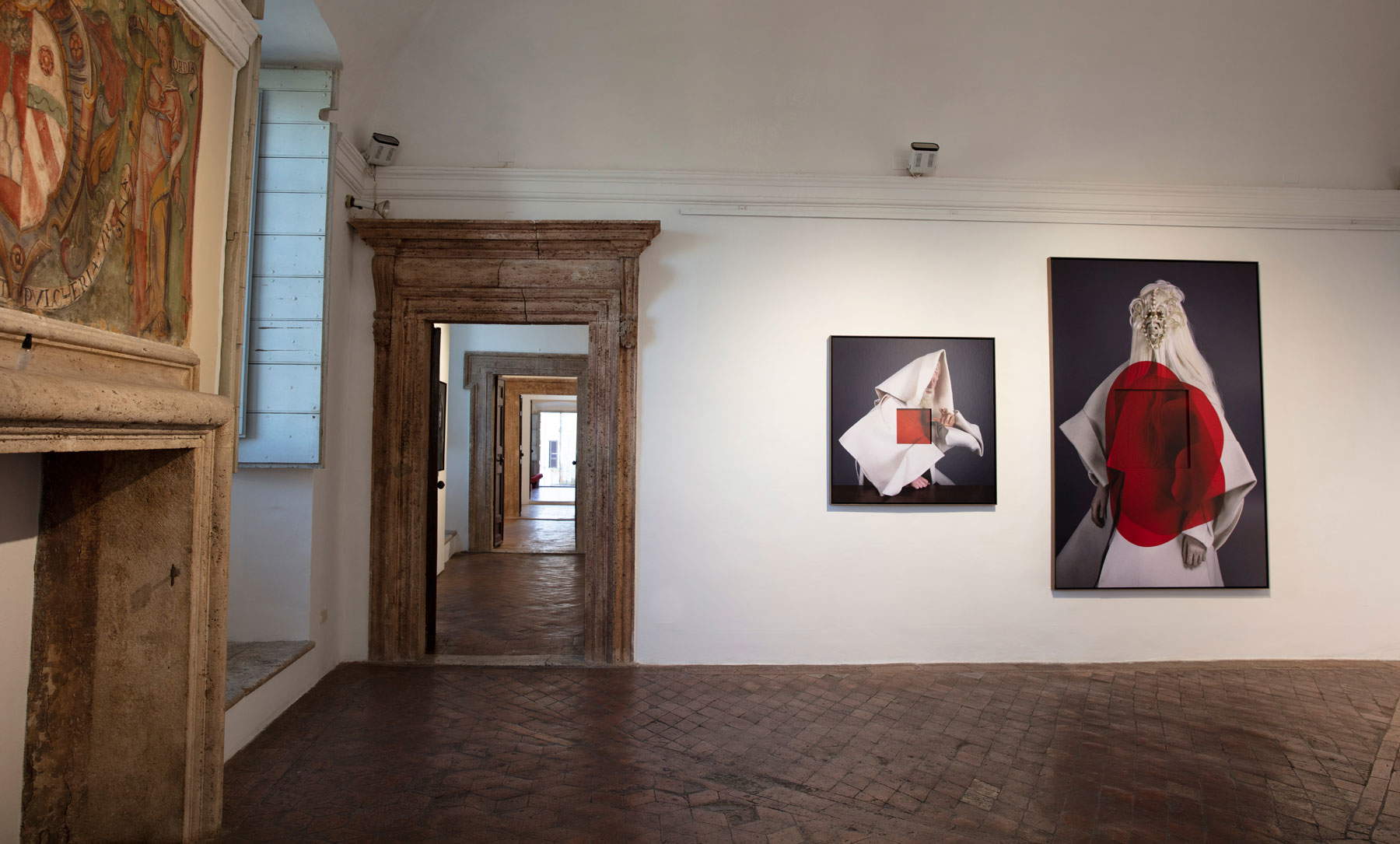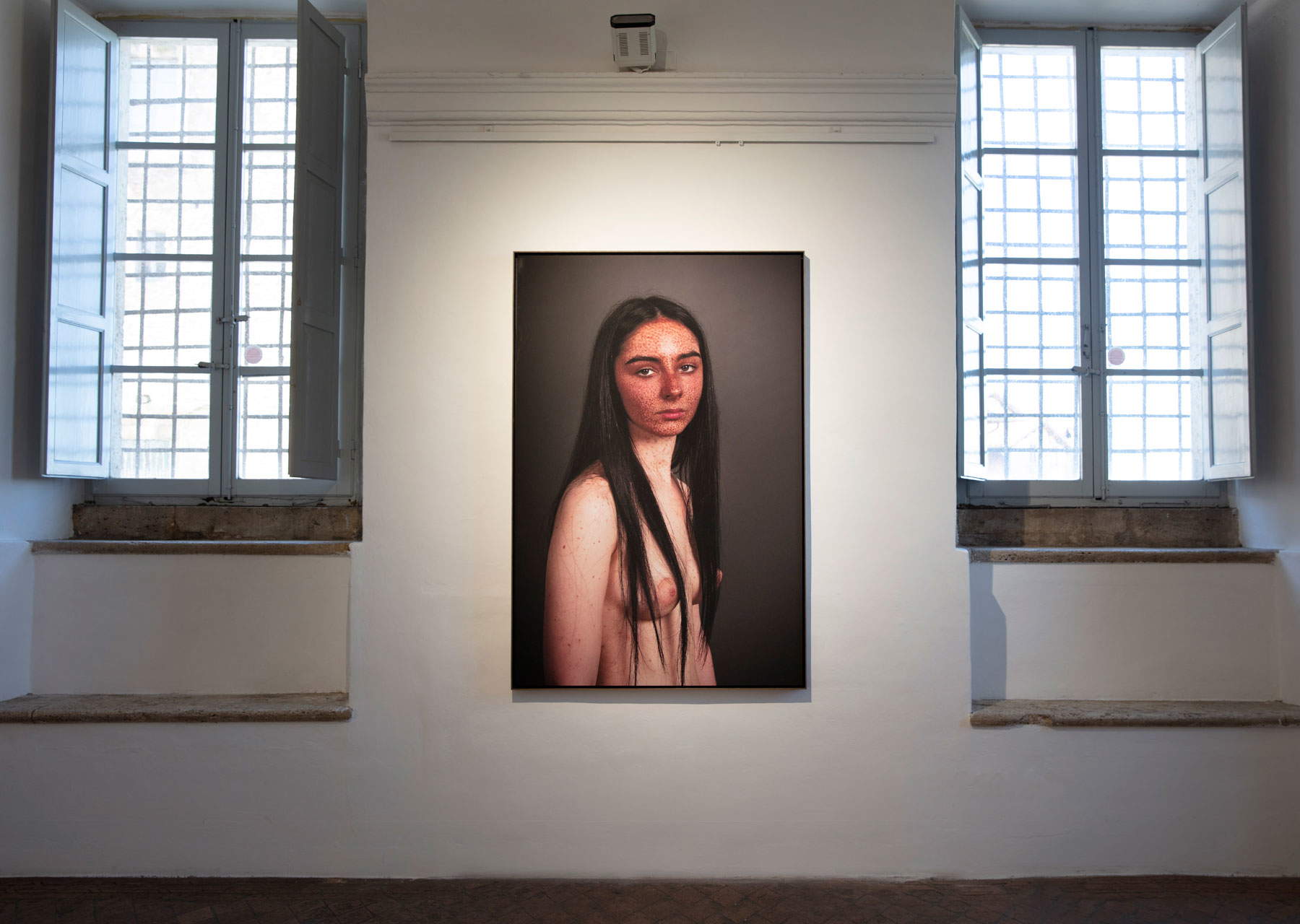Galleria Giampaolo Abbondio is one of the most active galleries in recent months: bucking the market trends, it has recently moved its headquarters to Todi, has just returned from Miart (the first fair in attendance in Europe since the beginning of the Covid-19 pandemic), and has some interesting projects in store, starting with the Poetry and Revolution exhibition in the space on via Porro Lambertenghi in Milan. We spoke with Giampaolo Abbondio about his choices, framing them in the current context of the market and the Italian scene. The interview is edited by Federico Giannini.

FG. Your gallery is fresh off Miart. What was it like to return to a fair in attendance after almost two years of forced downtime?
GA. It was very nice to come back to the fair and meet the public and collectors: ours is already in itself a work that normally contains solitude, let alone what it can mean not to be able to meet the public anymore. You lose the sense of what you do, because it is a job that you do to be seen, and if we cannot be seen it is as if we do not exist, so the fair itself is a wonderful opportunity. Unfortunately, some serious scheduling mistakes on Miart’s part weigh heavily, because making a fair close to Art Basel meant putting a large part of the public in front of the choice between coming to Milan or, the following week, going to Basel, and in my opinion unfortunately many chose the second option. And that was definitely a detriment to us. For example, no Italian museum director was seen at the fair, which was quite mortifying on the first outing in two years.
Moreover, scrolling through the list of galleries present at Art Basel, one notices the names of very few Italian galleries. Is this a symptom of a problem suffered by the world of Italian operators?
Art Basel has always been an Anglo-German phenomenon. Because anyway, even of French people there are not that many. In Art Basel we Italians are in the ethnic quota, and especially in Art Basel they want our modern art galleries, not contemporary art galleries... if you take a tour among the booths you realize what the Italian proposal is. That is, if there are five contemporary Italian artists on display, that’s a lot.
How do you think the art market in Italy, in this last year and a half of pandemic, has changed? What has it had to face, what evolutions has it experienced, how is it moving?
Those who benefited in this situation were the auction houses, because anyway they could operate online by offering recognizable titles that are easier to deal with without a presence. Also, the market has increasingly focused on established proposals. There was not much room for research and innovation. It’s physiological: it happens because you haven’t been able to see the works live and you haven’t been able to visit the exhibitions. The fact is that if you propose a red cut by Fontana, the collector knows very well what you are talking about, and he can buy it even without seeing it, but if you propose, for example, a mixed technique on canvas of two by three meters by an unknown artist, here the collector needs to see it. Then maybe we are talking about an extraordinary masterpiece, but if the buyer is not in front of it, he will never understand what it is. So this mechanism was favorable for what was known and not for what was not known.
Shifting the focus from the more general discourse on the market to your gallery: for some time now you have moved to Todi, and it is interesting to know why you made this counter-trend choice, and how it is going.
We opened in Todi on June 19 with an exhibition by Matteo Basilé. We opened in Todi a little bit because it happened like this: we had, in Milan, an exhibition space that we shared with Luger, and finding myself in this round I was offered a space in Umbria of extraordinary beauty ... and I said to myself “let’s do this experiment, instead of looking for the usual post-industrial space in the city let’s try to exhibit the works within a Renaissance setting in a city of art.” But I must also say that these reflections came later: that is, the first impulse was the impact with a beautiful gallery, and the idea of trying to go and open in this beautiful gallery. An impulse also related to the lockdown imprisonment, to some extent. As for how it’s going, I think it’s going quite well, the first exhibition was very well received, we had a lot of audience, a lot of visitors, paradoxically many more than I was getting in Milan having in front of a parking lot, the 9 stop and the subway. So I am very satisfied with this choice. Then, of course, we also need to let a full cycle go by, that is, we need at least two years to see if it works or if we should change.
What kind of audience is the one in Todi?
I found myself professionals, insiders, tourists. Of everything, in short. Todi itself has seven thousand inhabitants, and it’s certainly not the population of Todi that makes up the hard core of visitors to the gallery ... and then mostly a lot of people come from Rome, because in any case Todi falls within Rome’s gravitational zone so many people come for a weekend jaunt and pass by the gallery.





We used to say that the impulse to open in Todi came during the months of the lockdown. But is this choice a symptom that some change is afoot? That is, will we move toward decentralization after the pandemic?
That I don’t know, because in any case trying to understand this work by generalizing or trying to attribute behavior to large numbers in my opinion does not work, because everyone is a story unto themselves. I feel this need and others, on the other hand, continue to come to Milan, I am thinking for example of colleagues who move to Milan from provincial cities, so no, I don’t think it will be a generalized thing. In any case I also make it a cultural issue: we have values to re-propose, which are those we find in Umbria: those of the beauty of the landscape, history, gastronomy, things to which I am not insensitive, and they are the advantages we have over the United States where, for example, the power is above all economic. So it’s about going back to one’s roots and trying to assert the strength of those roots.
Is the current Italian contemporary art scene aligned with these values? And more generally, what do you think?
The Italian art scene is a mess. We definitely have very good artists, but we don’t have a system, and collectors will never spend over certain amounts of money on an Italian artist, so they don’t support him or her in a useful growth to then face an international market. And then, we do the first fair in attendance after almost two years and no museum directors come. It’s a system that doesn’t trust itself, so it’s in very bad shape. I am sure that our artists have nothing to envy to many other established artists from other realities. The problem is that, precisely, no one here supports them.
And what could be done, I am not saying to solve the problems (because these are long-standing issues that are not going to be solved in a short time and with a few interventions), but at least to begin to initiate a turnaround?
It is a well-compromised situation. Also because, as I said, the collector is the first one not to invest in Italian artists. In any case, we would first need a nice program of acquisitions by museums, and not wait until the artists are dead to evaluate them, as was done for example with Maria Lai or Alighiero Boetti. I for example discovered contemporary art through Boetti, but when I approached art in 1997 they were pulling him after me, because he was about to be forgotten. Then they bought him from Christie’s and everything changed from there, but Boetti was slipping into oblivion.
Coming back to the gallery instead: any anticipation of the upcoming program?
On October 23 I am opening a group exhibition on word as image. I’ve asked (but I’m waiting for confirmation) Frankie Hi-Nrg to write me a presentation because he is someone who knows about words. Then in December I will do a solo show of Pablo Candiloro, an Argentine painter who is active in Italy and with whom I have been working for a few years now, then I have a few plans for the spring with artists other than those in the historical programming in the gallery for which, however, I am waiting to tell you. Again, we will participate in MIA, we will participate in Artissima with a monographic booth on Maria Magdalena Campos-Pons, and for now I would say that’s it.
To conclude, what expectations do you have for the Umbrian experience?
I was saying that it is a return to the roots: when I send photos to the artists I know who live in the United States, they immediately ask me where my home is. So I expect to be able to get artists to come and produce in Umbria and broaden the debate a little bit, that is, to no longer just be sad importers of works but producers who give added value.
Warning: the translation into English of the original Italian article was created using automatic tools. We undertake to review all articles, but we do not guarantee the total absence of inaccuracies in the translation due to the program. You can find the original by clicking on the ITA button. If you find any mistake,please contact us.